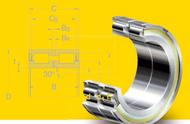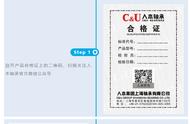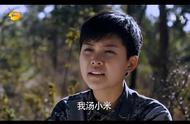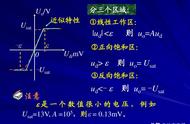
高中英语易错的知识点(一)
▼易错点1 名词的单复数形式的误判
【典型错例】
—What do you think the should do first?
—They should learn to take as well as share rights in life.
A.grown-up; responsibility B. growns-up; responsibility
C.grown-ups; responsibilities D. growns-ups;responsibilities
错因分析:
有些考生以为grown是复合名词的中心词,其复数形式应该在grown后面加-s;另一方面认为responsibility是不可数名词,没有复数形式,从而错选B.其实,grown-up没有中心名词,其复数形式应该在up后面加-s;同时根据语境可知,responsibility指义务,该单词作“义务,职责”讲时,可作可数名词或不可数名词,故正确答案选C.
复合名词的复数形式一般在中心名词后面加-s,如:looker-on →lookers-on, son-in-law →sons-in-law;但是当复合名词没有中心名词时,其复数形式是在最后的词后面加-s,如:grown-up → grown-ups; go-between → go-betweens.
▼易错点2 名词的格的误用
【典型错例】
—Look! This is .
—Very beautiful. When did she take it?
A. mymother‘s picture B. my mother in the picture
C. apicture of my motherD. a picture of my mother‘s
错因分析:
考生可能受汉语思维的影响,错选A或B;也可能受英语双重所有格的影响,错选D.根据语境可知,正确答案选C.
mymother‘s picture,意为“我妈妈所拥有的照片”,暗含“照片上不一定是我妈妈”; a picture of my mother‘s意为“我妈妈所拥有的照片中的一张”,同样,暗含“照片上不一定是我妈妈”; a picture of my mother意为“我妈妈的照片(照片中是妈妈)”;my mother in the picture意为“照片中我的妈妈”,暗含“不是真实的妈妈”。

▼易错点3 名词作定语的误用
【典型错例】
—Where does your sister work, Jack?
—She works in a .
A.shop of clothB. cloth‘s shop C.shop with clothes D. clothes shop
错因分析:
有些考生会因为对名词作定语的用法运用不当而错选B.其实,clothes“服装”只有复数形式,而单数形式“布店”应用shop for cloth或cloth shop,因此,根据语境可知,正确答案选D.
名词作定语时一般用其单数形式,然而,名词parents, clothes,sports等,作定语时必须要使用其复数形式。另外,man,woman作定语时,如果中心词是单数,则用其单数形式;如果中心词是复数,则用其复数形式。
▼易错点4 对不可数名词的应用判断失误
【典型错例】
—I find it very difficult to read novel you lent me last week.
—Yes. It‘s necessary to have good knowledgeof history.
A. the;不填 B. a;不填 C. the; a D. a; a
错因分析:
考生可能以为第一空是特指对方上周所借给“我”的小说,故应填定冠词;第二空后面是抽象名词,为不可数名词,不填冠词,于是错选A.然而,此处knowledge之前须用不定冠词,have a good knowledge of意为“对……很了解”,是固定搭配,故正确答案选C.
英语中,有些抽象名词,如knowledge, history,failure, success, help, pleasure, surprise,honour等表示抽象概念时,其前面不用不定冠词,如:with pleasure, in surprise等。但是,当表示具体的概念时,其前面须用不定冠词,也可以用其复数形式。
▼易错点5 对专有名词的应用判断失误
【典型错例】
—Do you know Li Ming?
—Li Ming? Which one?I know Li Ming in our class very well. He is Lei Feng of our times.
A.不填;不填 B. a; a C. a; the D. the; the
错因分析:
有些考生可能以为两个空后面的名词都是人名,前面不用冠词,于是错选A.然而,联系语境可知,答话者至少认识两个李明,而特指他班上的那个李明时前面须用定冠词;后一空的Lei Feng由of our times修饰,说明是我们时代的特征,须用定冠词,故正确答案选D.
人名前面加定冠词,指特定的某个人或某个人的主要特征。地名前面一般不用定冠词,但是当指特定某时期的地方或某地的主要特征时,须用定冠词。
如:China → the China (of) today; America → the America of last century; the New York of China等。
表姓氏的复数名词前面用定冠词表示夫妇两人或全家人,如:the Greens.
▼易错点6 定冠词与不定冠词判断失误
【典型错例】
—When did you meet her last?
—I don‘t remember exactly, but I‘m sure it was Friday when I went tothe shop to buy football.
A. a; a B. 不填;a C. the;不填 D. 不填;不填
错因分析:
有些考生可能认为这两个空后面的名词前都不用冠词,从而错选D.其实,指一个特定的星期几时前面须用不定冠词;表示一个足球时,前面也须用不定冠词,故正确答案选A.
表示星期几的名词前面一般不用冠词,但是当指某一个特定的星期几时,前面要加不定冠词。球类活动中,表球类的名词前不用冠词;音乐活动中,表乐器名称的名词前须用定冠词。但是,当它们不指活动,而是指具体的某件东西时,须用适当的冠词。
▼易错点7 冠词与零冠词应用判断失误
【典型错例】
—What do you think is the difference between man and woman?
—I don‘t think there‘sany difference.
A. the; the B. a; a C. 不填;不填 D. a; the
错因分析:
有些考生可能认为,表示类别时,名词前面须用不定冠词或定冠词,于是错选A或B.其实,man, woman, mankind的单数表示类别时,用零冠词。因此,正确答案选 C.
除了上述情况用零冠词外,下列几种情况也须用零冠词:表示家人(包括保姆、厨师、家庭教师在内)的名词前,但该类名词的首字母往往大写;表示种类的短语kind of, sort of,type of等后面的名词之前;在as/though引导的倒装让步状语从句中,放在句首的名词前;用by表示交通方式的短语中等。
▼易错点8 受思维定式的制约
【典型错例】
—Remember that where and when two different English question words.
—I see, but can you tell us how to use them, sir?
A. beB. is C. are D. being
错因分析:
有些考生没有弄清题意,就想当然地认为用where and when提问时,谓语动词用单数形式,于是错选B.其实,这里是指where和when这两个特殊疑问词,故正确答案选 C.
考生应该从思维定式中走出来,不要被一些假象所迷惑,而应该从实际语境出发,对题目进行仔细的考虑。
▼易错点9 典型数词的误用
【典型错例】
It isnot rare in that people in fifties are going to university for furthereducation.
A. 90s;the B. the 90s;/ C. 90s;their D. the 90s;their
错因分析:
考生很可能错选B或C.“世纪”和“年代”均为特指概念,故第一个空要用定冠词the,表示特指,如:in the 1980s/1980‘s(在20世纪80年代),in the 90s/90‘s(在90年代),选项A和C首先被排除;又因为“in one‘s 整十的基数词的复数形式”为一个固定的结构,意为“在某人几十多岁时”,故 D为本题的正确答案。
考生要注意当表示“几十多岁”时,要用整十的基数词的复数形式来表示。

▼易错点10 it 用作形式主语及形式宾语时判断失误
【典型错例】
Iwould appreciate if you could come and help me with my work.
A.thatB. it C. this D. one
错因分析:
很多考生认为this或that可以指代上文或下文所出现的内容,于是误选A或C.其实,用于指代后面整个句子的内容且作形式宾语时,只能用it,于是正确答案选 B.
在英语中,有些动词,如:appreciate, hate,like, dislike, make, put等后面不能直接跟从句,而要用it作形式宾语。
▼易错点11 it, one, that, those, ones等的用法区别
【典型错例】
—Would you like to buy a car here?
—Yes, but I‘d like tobuy made in Shanghai.
A. oneB. that C. it D. this
错因分析:
许多考生认为此处应该用it或that指代说话双方所说的车,于是误选B或C.根据语境可知,上海制造了许多小汽车,答话者只想买其中的一辆,故正确答案选 A.
指代上文提到的名词时,it指代上文提到的那个东西,即同类同物;that指代抽象的事物或上文提到的同类事物的另一件东西,可替代可数名词,也可替代不可数名词,表示特指;而one指代上文提及事物中的其中一件,只能替代可数名词,表示泛指。
▼易错点12 the other(s), other(s), another,the rest等的用法区别
【典型错例】
I havedone much of the work. Could you please finish in two days?
A. therestB. theother C. another D. theothers
错因分析:
本题考生易误选D项。其实本题是对the rest用法的考查。
选项B、C均修饰可数名词,选项D相当于“the other 可数名词复数”结构,这三个选项用在本题中都不合适。
therest指代名词时,既可以指代可数名词复数,也可以指代不可数名词。
在本题中,the rest指代不可数名词,相当于the rest of the work,故选项 A为本题的正确答案。
当the rest作主语时,谓语动词单复数的使用要由the rest所指代的内容来决定。
▼易错点13 [WTHZ]either, both, neither, all, none等的用法易错点
【典型错例】
Hisfather has bought many books home, but is easy enough for him to read.
A.noneB. no one C. every one D. some one
错因分析:
许多考生会根据but一词推测后面表否定意义,但是又考虑到空格后面没有介词of,于是误选B.根据语境可知,空格后面省略了of the books,因此正确答案选 A.
no one与none的用法:
(1)no one相当于nobody,只能指人。
(2)none常与of短语连用,既可以指人,又可以指物。
(3)none通常用于“how many/much...”的否定回答,而no one则常用于“who...”的否定回答。
▼易错点14 else用法的误区
【典型错例】
I don‘t think we‘ve met before. You‘re taking me for .
A.some otherB. someone else C. other person D. one other
错因分析:
有些考生不知道else的用法,以致误选A、C或D项。其实本题是对else的用法的考查。else既可以用作形容词,也可以用作副词,意为“其他的/地”,通常位于疑问代词、疑问副词或不定代词的后面。someone else意为“别人”,用在这里正合适。 B项为正确答案。
考生还应知道who else的所有格形式为who else’s或whose else,如:
Whoseelse/Who else’s can it be?那可能会是谁的呢?

▼易错点15 多个形容词作定语时的排序问题
【典型错例】
Thisgirl is Linda‘s cousin.
A.prettylittle SpanishB.Spanish little pretty
C.Spanishpretty littleD.little pretty Spanish
错因分析:
考生易错选D项。原因是对此类题的排序把握不清。本题是对多个形容词作定语时排序问题的考查。pretty为主观描绘性的形容词,little为表示大小的形容词,Spanish为表示国籍的形容词,根据英语语法知识可知,选项 A为本题的正确答案。
在高考英语中,多个形容词作名词的定语时的排序问题是常考问题。形容词的排序规则如下:
主观描绘性质、特征的形容词(如pretty))——描写尺寸大小的形容词(如little)——描写形状的形容词(如round)——描写年龄的形容词(如young)——描写颜色的形容词(如green)——描写国籍、地区、出处的形容词(如Spanish)——描写制造材料的形容词(如wooden)——描写用途的名词、动名词或形容词(如a waiting room中的waiting)。
多个形容词作定语时,形容词之间通常不用加and;但是,当这些形容词为表示同一方面的形容词(如颜色等)时,这些形容词之间通常要加and,例如:a black and white cat(一只黑白相间的猫)。
▼易错点16 形容词和副词的比较等级易错点
【典型错例】
Of thetwo sisters, Betty is one, and she is also the one wholoves to be quiet.
A.ayoungerB.a youngest C.the younger D.the youngest
错因分析:
由题目中的two可知,横线处应为比较级结构,故选项B和D首先被排除。根据题意可知,横线处应为特指概念,故选项 C为本题的正确答案。
在英语中,两者之间的比较应用比较级结构。句中有表示范围的of the two...时,该比较级前通常要加上the,表示特指的概念,如:
He istaller than you.他比你高。
He isthe taller one of the two.他是两个人中较高的那个。
▼易错点17 同级比较的用法易错点
【典型错例】
Nowadaysthe roles of husband and wife are not as defined as before, especially when bothpartners work and earn money for the family.
A.clearB.clearer C.clearly D.more clearly
错因分析:
考生易分辨不清词性而误选A项。根据语法知识可知,as... as... 为同级比较结构,as与as之间要用形容词或副词的原级,故选项B和D首先被排除;又由于此处defined作动词,它要用副词来修饰,故选项 C为本题的正确答案。
在高考英语中,同级比较问题是一个常考点。其结构为:“so/as adj./adv.(原级) as...”,其中的so... as... 结构只能用于否定结构中;而as... as... 结构既可以用于肯定结构中,又可以用于否定结构中,如:
Sheisn‘t as/sonice as her sister. 她不像她姐姐那么好。
▼易错点18 形容词和副词的一些固定用法的误用
【典型错例】
—Have you been to New Zealand?
—No. I‘d like to.
A.tooB.though C.yet D.either
错因分析:
分析句意可知,横线处应填一个表示转折关系的词,选项A和D首先被排除;yet表示转折关系时,后应接一个从句,故选 B项。
though用作连词时,意为“虽然”,引导让步状语从句,通常可以与连词although互换,如:
Though/Althoughthey are poor, they are generous.尽管他们很穷,但他们很慷慨。
另外,though还可以用作副词,意为“然而”或“但是”,表示转折关系。它位于句尾时,其前通常要有一个逗号;当它位于句中时,其前后通常各用一个逗号,它的这种用法与副词however一样。要注意,although是没有这种用法的。
▼易错点19 几个情态动词的特殊用法易错点
【典型错例】
Don‘t play with the dog, Jack, for it be dangerous at times.
A.shallB. should C. can D. must
错因分析:
很多考生认为玩狗将很危险或者肯定很危险,从而误选A或D.其实,shall用于第二、三人称表示“允许,命令,警告,威胁”等;should表示“应该”;must表示“必须,一定”等;而can除了表示“能,能够”外,还可表示“(有时)会,可能会”等。根据语境及情态动词的意义比较可知,正确答案选 C.
情态动词can在高考英语中的出现率很高,它的其他常考点。如:
can可以表示能力,表示客观的可能性,表示请示和允许,表示惊异、怀疑、不相信的态度。主要用于肯定句、否定句和疑问句中。用于肯定句中表推测时,指理论上的可能性,并不涉及是否真的发生。
▼易错点20 动词的一般过去时与现在完成时误用
【典型错例】
— you read the story?
—Yes. I it at school.
A.Have; read B. Did; read C.Have; have read D. Did; have read
错因分析:
有些考生认为,两个人说话时,所用的时态应该是一致的,于是误选B或C.其实,问话者指的是结果,而答话者虽然强调的是地点,但是地点暗示动作发生在过去,于是正确答案选 A.
动词时态的运用不仅要从时间状语上进行确定,而且还要从地点状语所暗示的时间关系上来推敲。如:
(1)表示过去时间的词或短语:yesterday, last night, last week, this morning, in 2006等。
(2)表示动作发生的地点:at home/school, in the factory, on one‘s way to等。
高中英语易错的知识点(二)
下面从高考英语语法角度对易错点进行归纳,带你扫清高中阶段所有语法难点!
一、定语从句
引导定语从句的关系代词有that,which,who(宾格whom),所有格whose)和关系副词 where when why 等,关系代词或关系副词在定语从句中充当一个成分,关系代词that,which,who,whom等在从句中分别作主语或宾语,whose在从句中作定语,而关系副词when,where,why等在从句中作状语。 如:
①I will never forget the days when/in which we worked together.
②I will never forget the days which/that we spent together.
解析:在句①中,表示时间的名词the days在从句中充当的是状语,所以用关系副词when来代指,引导定语从句修饰先行词the days;
而在句②中,表示时间的名词the days在从句中充当的是动词spent的宾语,所以用关系代词that或which来代指。
同样,表示地点或原因的名词如果在从句中作状语,则用关系副词where 或why来代指;如果在从句中作动词的宾语,则用which或that来代替。 如:
①This is the factory where/in which I worked.(作状语)
②This is the factory that/which I visited years ago.(作宾语)
注:当先行词为time,reason, place时,引导词可以省略。如:
①This was the first (when/what) I had serious trouble with my boss.
②That is the reason (why) I did it.
③This is the place (where) we met yesterday.
另外,定语从句中谓语动词的数应与先行词的数相一致。如:
①Mr. Jackson is the only foreigner that is present at the party.
②He is one of the students who were praised by the teacher.
解析:在句①中,先行词foreigner被only修饰,强调只有一个,所以从句中谓语动词用单数形式,而在句②中,who引导的定语从句修饰先行词the students,为复数,所以从句谓语动词应为复数。
二 名词性从句中的易错点
(一)that引导的定语从句与同位语从句
定语从句与前面的的名词是修饰与被修饰的关系,"……的名词",而同位语从句是用来说明前面名词的内容。与that从句同位的名词必须是一些表示事实或概念的抽象名词,如:
fact,news,belief,truth,reply等。
That在定语从句中必须作成分,可用which或who/whom代替,而that在同位语从句中不充当任何句子成分,只起连接作用。如:
①Along with the letter was his promise that he would visit me this coming Christmas.
②Do you still remember the chicken farm that we visited three months ago.
解析:在句①中,that引导同位语从句解释说明promise的内容,that不充当任何句子成分,只起连接作用,而在句②中,that在其引导的定语从句中作动词visited的宾语,对先行词the chicken farm起修饰作用。
(二)名词性从句中,关于it作形式主语和形式宾语的易错点
1) 名词性从句作主语或宾语时,为保持句子平衡,常用it作形式主语或形式宾语。如:
It's a pity that he don't come to give a speech.(形式主语)
We think it possible that you can finish the job today.(形式宾语)
2)谓语动词 appreciate, dislike, hate, like, love,
make等接由if或when 引导的宾语从句时往往在从句前加上形式宾语it. 例如:
I would appreciate it if you could come to my birthday party.
3)动词hare, take, hide, punish, put等,后接由that 引导的病因从句式,往往在从句前加形式宾语it. 例如:
① I take it that you will be leaving Shanghai soon.
② we punished it that we had finished the project ahead of time.
4)短语动词answer for, count on depend on, insist on,
see to等后接有that引导的宾语从句时,必须冠以形式宾语it. 例如:① I'm counting on it that you will come. ② She'll see to it that he goes ahead. 注:作形式主语和形式宾语时只能用it.
三、代词it、one、that的用法与区别
One泛指,指代前面提到的那类人或物,用于指代可数名词,相当于a 名词单数,其复数形式ones前一般要有定语,否则就要用some.
That(those复数)即可指代不可数名词,表特指,相当于the 名词,后面经常与介词修饰语连用。 It指代上文出现的名词,表示同类同物,另外还可表示时间、距离、天气、还可指代人称代词,表示性别身份不明,可作形式主语,形式宾语,引导强调句式以及一些固定搭配,如:get it, catch it, make it.
例如:① I have lost my watch. I think I must buy one.我丢了只表,我想我必须再买一只。(代指上文指到的同类事物,但不指同一个)
② Where is my pen? Have you seen it?
我的钢笔不知弄到哪去了,你见了吗?(代指上文提到的同一事物) ③ The land of China is larger than that of America.
④ Tome has a red pen and a blue one (或two blue ones)
⑤ He has no child, and he wants toadopt one (或 some)
四、虚拟语气
I 虚拟语气在if 引导的条件句中的易错点。
① if my lawyer had been here last Saturday, he would have prevented me from going.
② if you had studied hard at school, you would be a college student now.
句子①②都是虚拟语气在条件句中的使用,从句中都是假设过去的情况,所以用过去完成时,但在主句中,句①依然指代过去的情况,谓语动词是would have done,而②中含有一个表示现在的时间状语now, 这样就必须将其理解为假设现在的情况,所以谓语动词必须为would/should/might 动词原形,学生在这一点上经常会忽略now的存在,从而按句①的形式填写答案。

Ⅱ虚拟语气在名词性从句中的用法
1.在it is important (strange, natural, necessary……) that 句子或者It is decided (ordered,suggested, demanded, advised……) that句子中,主语从句中的谓语动词常用(should) 动词原形结构,表示某事"重要"、"必要"、"被决定"等
例如:① it is important that everyone (should ) obey the rules all day and all night.
② it is decided that the meeting (should) be held tomorrow afternoon.
2. suggest, insist 后面指宾语从句时需注意的地方
1)①suggest 当"建议""提出"讲时,其后宾语从句的谓语动词常用"should 动词原形" 例如:He suggested that the work (should) be started at once 他建议立即动工。
类似的动词还有insist坚持,demand要求,desire要求、请求,request请求,require要求、需要,order命令,propose建议,command命令,ask要求,advise建议,prefer宁愿等。 这些动词变被动语态(如:It is suggested that主语从句)形式后,主语从句谓语动词仍用"(should) 动词原形" 这些动词变名词(如suggestion)后,其后的表语从句和同位语从句中的谓语部分仍用"(should) 动词原形"
②suggest 当"提出(某看法),暗示,启发"讲时,其后宾语从句的动词不用虚拟语气。 例如:(1)The police suggested that the thief might be one of the family member
警察局提出窃贼可能是一名家庭成员。
(2)Her yawns suggests that she is sleepy. 她打哈欠表明她困了。
(3)Although he didn't suggest that we __ the decision to swim across the river, but his look suggested that our decision __wrong.虽然他没提出我们应该终止游过这条河的决定,但他的表情表明我们的决定是错误的。
A:stop; wasB: should stop; be
C: stopped ;wasD: stopped; should be
在这个句子中,前一个suggest当"建议""提出"讲,而后一个作"表明"讲,所以答案为"A"
2)①insist作"坚决要求…该…;坚持认为…定要…"讲时,其后宾语从句的谓语动词用"(should) 动词原形"
例如:I insisted that you (should) be there on time.我坚持认为你应该准时到那里去
②insist 作"坚持(意见,看法);坚持说,确信"讲时,其后从句不用虚拟语气。
例如:He suggested (that) he heard someone in the next room. 他坚持说他听到隔壁屋子里有人。
五.反意疑问句中的易错点
1.在一般疑问句中,无论肯定的问或是否定的问,如果回答为肯定则用yes,反之则用no.特别注意如果出现省略则看下文所暗示的意义。
①—Are you a new comer?
—Yes, I came here only yesterday.
②—Isn't Tom a good student?
—Yes, he is excellent.
③—Don't you think the composition good?
—No, It can't be any worse.
注意:在②③句中,当回答的意思与问句相一致时,则用No,译为"是的",当回答的意思与问句相反时,则用Yes,译为"不"
2.情态动词must
① I must leave now, mustn't I ?
② He must be in the classroom, isn't ?(表推测)
③ He must have finished his homework, hasn't he ? (表现在的结果)
④ He must have finished his homework yesterday afternoon,didn't he? (表过去)
当句子中有表示猜测的情态动词时,其反意疑问句的构成不能再用原句中的情态动词,而应根据原句在去掉情态动词的情况下的主谓关系来确定其反问形式。
六、非谓语动词中的易错点
非谓语与其逻辑主语(即动作的执行者或承受者)之间有三种关系,如为主谓关系,则用现在分词或不定式的主动式;如为被动关系则用过去分词、现在分词的被动(强调动作正在进行)或不定式的被动式(动作将进行);如既无主动也无被动关系则只能用状语从句或独立主格结构(即非谓语加上自己的逻辑主语)
Judging/considering/genrally speaking/supposing 指说话者的动作,故只用主动式。如:
Having been ill in bed for nearly a month , he had a hard time passing the exam.
解析:从这个句子可以看出,句词的逻辑主语与句子的主语he一致,并且是主谓关系,所以用了现在的分词作状语,同时,分词的动作明显地发生在句子的谓语动词动作之前,故采用了现代分词的完成式。
In order to improve English , ________.
A. Jenny's father bought her a lot of tapes.
B. Jenny's father bought a lot of tapes for herself.
C. A lot of tapes were bought by Jenny.
D. A lot of tapes were bought by Jenny father.
解析:根据不定式短语我们可以推知,句子的逻辑主语应该是人而不是物,所以,应该排除CD,再就是应该是Jenny提高自己的英语,而不是她爸爸,故答案先B.
———,we decided to go out for a walk.
A. It is fine B. It fine
C. Being fine D.It being fine
解析:主句主语we与动词短语be fine之间既无主动关系与无被动关系,所以要加上自己的逻辑主语It,由于不存在主、被动关系,故不能选C项,而应该选D 项。
————more attention, the trees could have grown better. A. Given B.To give C.Giving D. Having giving
解析:give与主句的主语之间是被动关系,故选A.如为主动关系则选C.
高中英语易错的知识点(三)
1. They ______ on the program for almost one week before I joined them, and now we _____on it as no good results have come out so far.
A. had been working; are still working B. had worked; were still working
C. have been working; have worked D. have worked; are still working
此题的时间参照点是before I joined them,,所以第一个空应该用过去完成进行时,第二个空根据时间now用现在进行时。
2. It would be a good idea to use a plastic bottle, ___cut off, as a container to grow young plants in.
A. of which the top B. the top is C. the top of which D. with its top
此题是独立主格结构,如果题干改为____is cut off,答案则为A或C
3. ______ is it _____ has made Peter _____ he is today?
A. What; that; that B. That; that; what C. What; what; that D. What; that; what
用还原法则为It is what that has made Peter what he is today可知是强调句式。
4. Before he went abroad,he spent as much time as he _____ English.
A. could learning B. learned C. to learn D. could learn
spend time (in) doing sth如果改为he did what he ______,则答案为could to learn.
5. The person we talked about ____ our school last week.
A.visiting B.will visit C.visited D.has visited
此题中包含一个定语从句,the person既作先行词,又作句子的主语,要填入的应该是句子的谓语,根据后面的时间状语为last week,应选过去时。句中包含的定语从句we talked about中about虽为介词,但不影响主句的谓语,故应选C。
观察下面三个句子:
□The person we spoke to ____ no answer at first.
A.making B.makes C.make D.made
此题中也包含一个定语从句we spoke to,the person既作先行词,又作句子的主语,要填入的应该是句子的谓语,根据句子的需要,应选过去时。本题中的to为陷阱,实际上它属于定语从句中,而不影响主句的谓语动词。故D正确。
□The person we referred to(提及)____ us a report tomorrow.
A.giving B.will give C.gave D.give
同上题一样,句中包含定语从句we referred to,所缺成份为句子的谓语,又根据句中的tomorrow,故用将来时。选B。
□The days we have been looking forward to ____ soon.
A.coming B.will come C.came D.have come
同理,此句中的定语从句包含短语look forward to,虽然to为介词,但并不影响主句的谓语动词,只是一个陷阱而矣。又根据句中的soon,应用将来时,故选B。
6. Not far from the club there was a garden, ____ owner seated in it playing bridge with his children every afternoon. A. whose B. its C. which D. that
答案为B。此题关键是理解seated这个单词,它是过去分词,而不是作谓语的过去式。它不能在句中谓语。所以后面句子不是一个非限制性定语从句,而是一个独立主格结构,故选代词its。
7. You should treat him (in) the way ____ suits him most.
A. that B. in which C. / D. why
此题中先行词the way后面的定语从句中充当主语。故只能选A。如果先行词the way有从句中充当状语,则可以用that, in which或省略。
8. He is a strict but kind-hearted father, ____ the children respect but are afraid of.
A. / B. that C. for whom D. one whom
此题答案只能为D。替代词one在句中作同位语,代指father,后面再接一个定语从句。先行词one又在从句中充当宾语。
9. --- You haven’t been to Beijing, have you? --- _____. And how I wish to go there again!
A. Yes, I have B. Yes, I haven’t C. No, I have D. No, I haven’t
注意题中最后一个单词again(看三遍!)。不要误选为D。答案应为A。全句的句意为“你没有去过北京,是不是?”“不,我去过。我多么想再一次去那里。”
10. Not only ______the jewelry she ____been sold for her son’s gambling debts but also her house.
A. is; has B. has; had C. has; has D.不填; has
此题中由于Not only置于句首,故用部分倒装结构。第一个has助动词,是句中谓语动词has been sold中has的提前。第二个has为实义动词,属于定语从句中,表示“有”的意思。本句的意思为:不但是她所有的珠宝而且还有她的房子一起已经被卖掉作为她儿子的赌债了。答案为C。

短文改错和作文写作常见错误分析
1、主谓关系中人称和数量不一致性
汉语的动词不受主语的人称和数的影响,但英语的谓语动词要和主语保持一致,谓语动词要随着主语而变化。而学生主要用汉语思维,因此他们往往没有习惯去考虑主语是第几人称,是单数还是复数。例如:
a. A number of students is going to learn a foreign language.
b. He go to school by bike every day.
分析:
a句中a number of 复数名词做主语时,其谓语动词用复数形式。b中 He是第三人称单数,在一般现在时态中谓语动词go应该加es。
2、时态
高中生在写作中经常在时态方面犯错误。英语时态种类繁多,动词的构成形式随着时态的变化而变化。中文里没有时态区分。动作或动词的时间由跟在动词后的诸如 “着”、“了”、“过”等副词来表示,对高中生来说,掌握英语的时态不是很容易。实际上,学习者在头脑里很清楚语法规则,但经常混淆或忘记改变动词的词形。例如:
a. A baby can cry as soon as it was born.
b. I spend 50 yuan buying the clothes.
c. I will not come here if it will rain tomorrow.
正确的句子:
a. A baby can cry as soon as it is born.
b. I spent 50 yuan buying the clothes.
c. I will not come here if it rains tomorrow.
分析:
第一句是一个常识问题,应该用一般现在时态。第二句“我买这件衣服花了50元”应该是过去时态。第三句主句是一般将来时,从句是一般现在时态。
3、语态错误
动词的被动式在英语中比比皆是,学生由于汉语思维的影响,很少考虑到用被动语态。虽然中文里也有被动式的含义,但与英语里被动式表达方式完全不同。英语里的被动式要求有助动词be和一个变异的过去分词形式,其中这个助动词带有时态和人称数量信息,中文里需要使用诸如“被”、“使”、“让”等词语,不需要有不规则的动词形式。这对中国的学习者来说就有潜在的困难。例如:
a. New bicycles must keep inside.
b. The book has to return at the end of the week.
c. The food has cooked.
d. Knife should take away from babies.
正确的句子:
a. New bicycles must be kept inside.
b. The book has to be returned at the end of the week.
c. The food has been cooked.
d. Knives should be taken away from babies.
很明显,这些句法结构己经被确认为未能正确使用英语中的被动式。学生还会犯一些其它方面的错误,其中之一是,常常把英语里没有被动语态的词(组),如 take place, occur, happen, belong to,appear, break out, rise, die等用作被动语态。
4、固定搭配
错误有介词短语的搭配,固定词组的搭配,更多的是特殊动词的搭配和用法出现错误最多。很多学习者在记单词的时候,不记搭配和真正用法,错误如下:
a. He suggested to go there on his bike.
b. My teacher explained me the text very carefully.
c. My mother made me to choose the one I liked best.
正确的句子:
a. He suggested going there on his bike.
b. My teacher explained to me the text very carefully.
c. My mother made me choose the one I liked best.
据以上的分析,中国学习者的英语应用很大程度上受到其母语的影响,直接翻译,没有记住这些动词的特殊用法。
5、非谓语动词
错误由于学生对非谓语动词的概念不清楚,对不定式、分词、动名词的用法不明白,对句子结构分析不正确,常把非谓语动词误用作谓语动词。学生不知道在英语句子中谓语动词只能有一个,如果有另外一个动词出现,这个动词有三种情况:一是并列谓语,但是这时候必须有连词,如and, but等;二是出现在从句里面;三就是以分词形式出现,现在分词和过去分词,还有不定式。现在分词有主动语态和进行时的含义,而过去区分词有被动语态和完成时的含义,不定式有将来时态的意义。例如:
a. In the museum there are a lot of interesting things look at.
b. I am looking forward to see you.
正确的句子:
a. In the museum there are a lot of interesting things to look at.
b. I am looking forward to seeing you.
分析:
a句中己有谓语动词there are,用来修饰things,此句缺的是后置定语。b句look forward to是一个固定短语,后面要接动名词。c句要用现在分词作定语,跟所修饰的名词之间是主谓关系,表示动作正在进行,因此用“sleeping”,相当于 “the child who is sleeping"。
6、冠词错误
学生在翻译时常会忘了考虑冠词,或者说不重视冠词这个问题,常有多用或少用或错用的弊病。
冠词考查分两个方面,一是冠词的残缺或多余,考生要注意关于含有冠词(不含冠词)的用法以及加冠词与不加冠词的区别,如:in charge of与in the charge of, out of question与out of the question的区别。二是冠词the, a, an(不定冠词和定冠词)之间的相互误用。
英汉名词确有许多共同点,但是也有不少不同点。英语名词有可数与不可数之分,汉语里没有,且一般情况下,名词都可受到数量词的限制。因此,英语写作中,一旦涉及到advice, news, progress, weather, information等少数常用不可数名词时,学生往往会犯错误。
不过,在使用英语不可数名词时,又会出现两种情况,一种是绝不可以用a/an或数词来直接修饰,如上述提及的几个名词:另一种情况是,少数不可数名词在被形容词等修饰后,可用a/an等来修饰。如time(时间),rain(雨)。所以我们可以说:We had a wonderful time yesterday. 例如:
a. The air is the most important thing for our existence.
b. The driver brought the car to stop. In this way, he avoided an accident.
c. When sun was setting, he still did not catch any fish.
正确的句子:
a. Air is the most important thing for our existence.
b. The driver brought the car to a stop. In this way, he avoided an accident.
c. When the sun was setting, he still did not catch any fish.
7、代词的错误
代词主要有人称代词、物主代词、关系代词、反身代词、疑问代词、复合疑问代词、指示代词,要注意代词的各人称之间和单复数之间的误用,关系代词 which, that, as之间的误用,关系代词that与疑问代词what之间的误用,关系代词which与关系副词when, where,以及what与how的误用等。例如:
a. We do not like he.
b. If you like this books, you can take them away.
c. His book is different from me.
d. The population of China is larger than those of Japan.
正确的句子:
a. We do not like him.
b. If you like these books, you can take them away.
c. His book is different from mine.
d. The population of China is larger than that of Japan.
汉语里,人称代词没有主格、宾格和所有格之变,而英语中的人称代词有主格、宾格和所有格之变,而且每格都具有其自身的用途,分别充当主语、宾语和定语等。尤其要注意的是,人称代词充当介词宾语时,也要采用其宾格形式。
8、连词的错误
连词主要有两类,即并列连词和从属连词,考查点主要是并列连词(分递进式、转折式、选择式和因果式四种)之间的误用(主要是but与so/and之间的误用),从属连词之间的误用以及并列连词与从属连词之间的误用等。例如:
a. He had little to eat and a large house to live in.
b. He had no sooner arrived when he fell ill.
c. If you go this way, and you will soon see the hospital.
正确的句子:
a. He had little to eat but a large house to live in.
b. He had no sooner arrived than he fell ill.
c.1f you go this way,you will soon see the hospital.
9、名词的错误
名词主要考查单数名词变复数名词,这主要是受东西方文化差异的影响,英语中除了不可数名词和单数名词用单数外,可数名词要用复数形式。另外还有一些特殊形式。例如:
a. What a beautiful weather we are having today!
b. Please give my best regard to your parents.
c. I have got good marks in all my subject.
正确的句子:
a. What beautiful weather we are having today!
b. Please give my best regards to your parents.
c. I have got good marks in all my subjects.
10、情态动词和助动词的错误
这类错误有以下几种情况:① 情态动词后的动词使用过去时态;② 情态动词后的动词加“s”③ 情态动词后的动词加“ing”④”will”后面的“be”动词用“am、“is”或“are ”;⑤助动词“do”后面的动词用动词过去时态;⑥。助动词“do”后面的动词第三人称单数加“s";⑦ 助动词“do”后面的动词加“ing”等。例如:
a. I could did my homework.
b. He may goes to school by bike every day.
正确的句子:
a. I could do my homework.
b. He may go to school by bike every day.
















